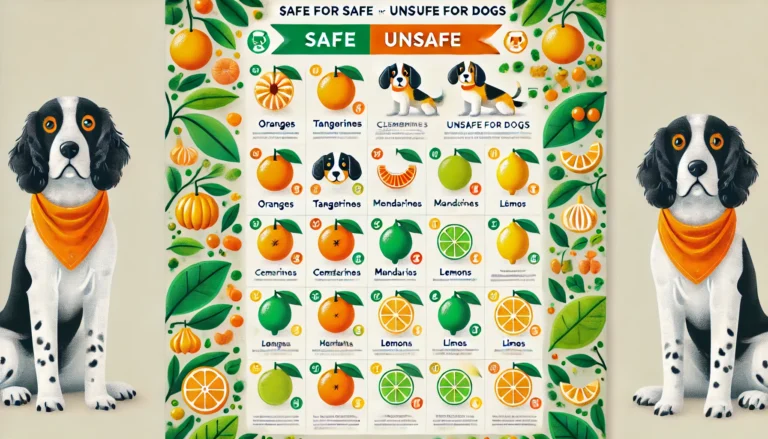Dry, Flaky Skin in Dogs

What food helps dogs with dry skin?YES!Dry, flaky skin is a common issue for dogs that can cause discomfort and irritation. As pet owners, it’s essential to identify the underlying causes of this condition and take appropriate steps to manage it. This comprehensive guide will walk you through everything you need to know about dry, flaky skin in dogs, including its causes, symptoms, and effective treatments.
What Causes Dry, Flaky Skin in Dogs?
Dry, flaky skin in dogs can be caused by a variety of factors, both internal and external. It’s essential to recognize the potential causes of your dog’s skin issues to provide them with the proper care.
1. Allergies
Allergic reactions are one of the most common causes of dry skin in dogs. Just like humans, dogs can be allergic to certain substances such as food, pollen, dust mites, or flea saliva. These allergies can trigger inflammation and dryness in the skin, often leading to flaky patches and itching.
2. Dry Air or Weather Conditions
Just as the winter months can dry out human skin, the same can happen to dogs, especially those with longer coats or sensitive skin. Dry air from indoor heating systems can strip moisture from your dog’s skin, causing it to become dry and flaky. Exposure to harsh weather conditions such as extreme heat or cold can also exacerbate this condition.
3. Parasites
Fleas, ticks, and mites can cause significant irritation and discomfort to dogs. Flea bites, in particular, can cause an allergic reaction in some dogs, leading to intense itching, dry, and flaky skin. Mites, such as those that cause mange, can also result in skin infections that lead to dry patches, redness, and irritation.
4. Poor Diet
A dog’s diet plays a critical role in the health of their skin. A lack of essential fatty acids, vitamins, and minerals can lead to dry, flaky skin. Omega-3 fatty acids, in particular, are vital for maintaining healthy skin, and a deficiency in these can result in dull and flaky fur.

5. Infections
Bacterial or fungal infections can also contribute to dry, flaky skin. These infections often occur as a result of an injury or scratch to the skin, creating an entry point for harmful pathogens. Yeast infections, for example, are common in dogs with skin folds or those who frequently get their paws wet.
6. Hormonal Imbalances
Certain hormonal conditions, such as hypothyroidism or Cushing’s disease, can affect your dog’s skin health. These imbalances can disrupt the natural oils produced by the skin, leading to dryness, flakiness, and hair loss. Hormonal imbalances may require specific treatment from a veterinarian.
Symptoms of Dry, Flaky Skin in Dogs
Dry, flaky skin in dogs is usually accompanied by various other symptoms that can help you identify the underlying cause. The severity of symptoms can vary depending on the cause of the skin problem.
1. Flaky Skin
Flaky patches of skin are often the first sign of dryness. You may notice dandruff-like flakes falling from your dog’s fur when you pet them. These flakes can vary in size and may appear white or yellowish.
2. Itching and Scratching
Itching is a common symptom of dry, flaky skin. Your dog may scratch, bite, or lick their skin excessively in an attempt to relieve the discomfort. Constant scratching can lead to further skin irritation and possible infections.
3. Redness or Inflammation
Dry skin can become inflamed, leading to red, irritated patches. This inflammation can occur anywhere on your dog’s body, but it’s particularly common on the belly, paws, and ears. In severe cases, the skin may become raw and tender to the touch.
4. Hair Loss
As the dry, flaky skin worsens, it may result in hair loss in patches. If your dog is constantly scratching or licking the affected areas, the hair may become brittle and break off. In some cases, the hair may not grow back until the skin condition is treated.
5. Odor
Infections and bacteria that thrive in dry, flaky skin may cause an unpleasant odor. If your dog’s skin has a strong, musty smell, it could indicate the presence of an infection that requires veterinary attention.
Diagnosing Dry, Flaky Skin in Dogs
To determine the exact cause of your dog’s dry, flaky skin, it’s crucial to consult with a veterinarian. The vet will likely perform a thorough examination, take a detailed medical history, and conduct various tests, such as:
1. Skin Scraping
A skin scraping is often performed to check for the presence of mites, bacteria, or fungi. The vet will scrape a small area of your dog’s skin and examine it under a microscope.
2. Allergy Testing
If an allergy is suspected, the vet may recommend allergy testing to identify the specific allergens causing the problem. This may involve blood tests or skin tests to pinpoint triggers such as certain foods or environmental factors.
3. Blood Work
Blood tests can help diagnose underlying hormonal imbalances, infections, or other health conditions that may be affecting your dog’s skin. The vet may check for signs of hypothyroidism, Cushing’s disease, or liver problems.
4. Skin Biopsy
In rare cases, if the cause of the skin issue is unclear, a skin biopsy may be performed to examine deeper layers of the skin tissue for any abnormalities.
Treatment for Dry, Flaky Skin in Dogs
Once the cause of your dog’s dry, flaky skin is identified, appropriate treatment can begin. Treatment options vary depending on the underlying cause of the skin issue.
1. Treating Allergies
If allergies are the cause of your dog’s dry skin, the vet may recommend antihistamines or corticosteroids to control the allergic reaction. In some cases, allergy shots or a change in diet may be necessary.
2. Moisturizing and Hydrating Products
To combat dry, flaky skin, moisturizing shampoos, conditioners, and topical treatments can help replenish moisture. Look for products specifically designed for dogs that are gentle and free from harsh chemicals. Omega-3 fatty acid supplements can also support skin health and reduce dryness.
3. Flea and Parasite Control
If fleas or other parasites are responsible for the skin irritation, the vet will recommend flea preventatives and possibly topical treatments to kill existing fleas. In cases of mange or mites, medications such as ivermectin or other mite-killing treatments may be prescribed.
4. Dietary Adjustments
A diet rich in essential fatty acids, vitamins, and minerals is crucial for maintaining healthy skin. Your vet may suggest a specific dog food formula with higher levels of omega-3 and omega-6 fatty acids or recommend supplements to improve skin health.
5. Treating Infections
If your dog’s dry skin is caused by a bacterial or fungal infection, antibiotics or antifungal medications may be prescribed to clear up the infection. Regular bathing with medicated shampoos can help manage symptoms and prevent future infections.
6. Hormonal Treatment
If a hormonal imbalance is diagnosed, the vet will recommend treatment based on the specific condition. For example, thyroid medication for hypothyroidism or corticosteroids for Cushing’s disease may be prescribed.
do you know
When it comes to your dog’s health, discovering lumps, bumps, or cysts on their skin can be worrying. Understanding what these growths could be, how they are diagnosed, and how they can be treated helps in effectively managing your dog’s health.
Preventing Dry, Flaky Skin in Dogs
Preventing dry, flaky skin in dogs involves proactive measures to maintain overall skin health. Here are some tips to help keep your dog’s skin moisturized and healthy:
1. Regular Grooming
Frequent grooming can help remove dead skin cells and promote healthy hair growth. Brushing your dog’s coat will also stimulate natural oil production, which can help moisturize the skin.
2. Balanced Diet
Ensure your dog is on a well-balanced diet that includes high-quality proteins, essential fatty acids, and vitamins. Talk to your vet about the best food options for your dog’s specific needs.
3. Regular Hydration
Proper hydration is essential for maintaining skin moisture. Always ensure your dog has access to clean, fresh water, especially during dry or hot weather.
4. Use Humidifiers
If you live in a dry climate or during the winter months when indoor air can become dry, consider using a humidifier to add moisture to the air. This can help prevent your dog’s skin from becoming dry and irritated.
5. Flea and Parasite Prevention
Consistent flea and parasite prevention is key to avoiding skin irritation caused by these pests. Use flea preventatives regularly and check your dog for signs of fleas or ticks, particularly during the warmer months.
Conclusion
Dry, flaky skin in dogs is a common issue that can have many causes, from allergies and environmental factors to infections and hormonal imbalances. Identifying the underlying cause of the condition is crucial to providing the right treatment and relief for your dog. With the right care, most cases of dry skin can be managed effectively, allowing your dog to enjoy healthier, more comfortable skin. If you notice any signs of dry, flaky skin in your dog, it’s essential to consult with a veterinarian for a proper diagnosis and treatment plan.
What food helps dogs with dry skin?
To help combat dry, flaky skin in dogs, it’s essential to provide a diet rich in essential fatty acids, particularly omega-3 and omega-6. Foods such as salmon, sardines, and other fatty fish are excellent sources of omega-3 fatty acids, which help to reduce inflammation and improve the condition of your dog’s skin. Flaky skin in dogs can also benefit from foods that contain flaxseed or chia seeds, both of which are high in omega-3s. Additionally, high-quality dog foods enriched with these nutrients can help maintain healthy, moisturized skin, reducing the dryness that leads to flaky skin in dogs.
Can I put vaseline on my dog?
While Vaseline is generally safe for external use on dogs in small amounts, it’s not the best option for treating flaky skin in dogs. Vaseline can create a greasy layer that traps moisture and dirt on the skin, which can lead to further irritation. It also makes it easy for dogs to lick and ingest the petroleum jelly, which can cause digestive issues. Instead of Vaseline, consider using pet-safe moisturizers and oils designed specifically for dog skin conditions, including flaky skin in dogs. Always consult with your vet before applying any products to your dog’s skin, especially if they have a pre-existing condition.
Is it OK if dogs lick coconut oil?
Yes, it’s generally safe for dogs to lick coconut oil in small amounts. Coconut oil can be beneficial for treating flaky skin in dogs, as it contains medium-chain fatty acids that promote hydration and have antibacterial and antifungal properties. When applied topically, coconut oil can help soothe dry, flaky skin in dogs. However, too much coconut oil, whether ingested or applied topically, can lead to digestive upset or skin irritation. It’s important to use it sparingly and monitor your dog for any adverse reactions. As with any new treatment, consult with your veterinarian to ensure it’s the right solution for your dog’s flaky skin.
What is the best oil for dogs’ flaky skin?
The best oils for treating flaky skin in dogs are those that are rich in essential fatty acids, which help to hydrate and nourish the skin. Fish oils, such as salmon oil, are highly beneficial for dogs with flaky skin as they provide omega-3 fatty acids that reduce inflammation and promote skin health. Other good oils include coconut oil, which has moisturizing and antimicrobial properties, and olive oil, which is gentle and soothing for the skin. Always opt for high-quality, pet-safe oils, and introduce them gradually into your dog’s routine. Consulting with a veterinarian is recommended to determine the most suitable oil for your dog’s flaky skin.
Is turmeric good for dogs?
Turmeric can be a beneficial addition to your dog’s diet when used correctly. Known for its anti-inflammatory properties, turmeric can help alleviate skin irritation and dryness that contribute to flaky skin in dogs. The active compound in turmeric, curcumin, can promote healthier skin and help reduce itching, redness, and inflammation. It’s essential to consult with your veterinarian before adding turmeric to your dog’s diet, as the right dosage depends on your dog’s size and health. While turmeric can help with flaky skin in dogs, it should be given in moderation and balanced with other dietary requirements.
How often should I bathe my dog with dry, flaky skin?
Bathing frequency for dogs with dry, flaky skin should be kept to a minimum to prevent further irritation. For most dogs, bathing once a month is enough, but this can vary depending on the severity of their condition and the product used. Over-bathing can strip natural oils from the skin, exacerbating dryness and flakiness. When treating flaky skin in dogs, use a gentle, moisturizing shampoo designed for dry skin. After the bath, apply a moisturizing conditioner to lock in hydration and prevent the skin from drying out again. If your dog has severe flaky skin, consult your vet to establish an appropriate bathing routine.
Are eggs good for dogs?
Yes, eggs can be a beneficial addition to a dog’s diet, especially for those with flaky skin. Eggs are a rich source of protein and essential fatty acids, which are important for maintaining healthy skin and fur. The biotin found in eggs helps improve the condition of the skin, reducing dryness and flakiness. Feeding eggs to your dog in moderation can help support skin health and prevent dry, flaky skin. Be sure to cook the eggs thoroughly to avoid any risk of foodborne illnesses and consult with your veterinarian to determine the right amount of eggs for your dog’s diet, especially if they are prone to flaky skin.
What does dog dermatitis look like?
Dog dermatitis, a common cause of flaky skin in dogs, appears as red, inflamed patches on the skin, often accompanied by hair loss, itching, and flaking. In some cases, the skin may be swollen or have a scaly appearance. Dermatitis can result from various triggers, including allergies, infections, or parasites. A dog suffering from dermatitis will often exhibit behaviors like scratching, licking, or biting at the affected areas. The condition can also lead to secondary infections if not treated promptly. If your dog shows signs of dermatitis, it’s important to consult with a vet to diagnose the cause and begin treatment for their flaky skin.
Can I just rub coconut oil on my dog?
Yes, you can apply coconut oil directly to your dog’s skin to help treat flaky skin, but it should be done with care. Coconut oil can help hydrate dry skin, reduce inflammation, and soothe the discomfort associated with flaky skin in dogs. Apply a thin layer of virgin coconut oil to the affected areas, and gently massage it into the skin. However, avoid excessive amounts as it can leave the fur greasy. It’s important to monitor your dog to ensure they don’t lick too much coconut oil off, as ingesting large amounts may cause stomach upset. Always check with your vet before using coconut oil on your dog’s flaky skin.
What oil is best for dogs?
The best oils for dogs depend on their individual skin needs, but for flaky skin, oils rich in omega-3 fatty acids are the most beneficial. Fish oils, such as salmon or cod liver oil, are excellent for reducing inflammation and improving the condition of your dog’s skin. Coconut oil is another great option for moisturizing dry, flaky skin due to its antibacterial and antifungal properties. Olive oil is also beneficial for hydrating the skin and adding shine to the coat. Consult your vet to determine the best oil for your dog’s flaky skin, and consider using a combination of oils for optimal results.






